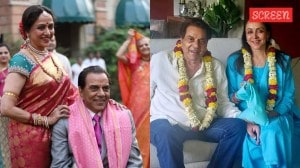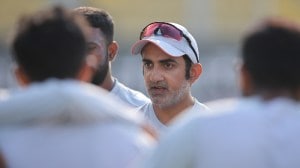Stay updated with the latest - Click here to follow us on Instagram
The Queen and I
When Shrabani Basu visited Queen Victorias summer retreat Osborne House in 2001,she was busy researching for Curry...
Shrabani Basu talks about her new book that captures the relationship of Queen Victoria and her trusted Indian servant
When Shrabani Basu visited Queen Victorias summer retreat Osborne House in 2001,she was busy researching for Curry,her book on Britains favourite dish. Basu was at the Durbar Hall,which had been restored for the centenary of the queens death,and in the Indian Corridor,she found herself staring at the portrait of an man in cream and red robes,painted by an Austrian artist called Rudolph Swoboda. He was Abdul Karim,the queens munshi (teacher) and the man who supposedly introduced her to curry and real India.
Its been nine years and two books since that visit to Osborne House,and Basu has finally captured the story of Queen Victoria and Abdul Karim in Victoria and Abdul: The True Story of the Queens Closest Confidant (Rupa,Rs 395). In spite of the true story bit in the title,the book is called fiction.
Karim,a clerk at the Agra Central Jail,was sent to the royal household on the occasion of the queens golden jubilee in 1887. He was a commoner but he soon became the most important Indian in Victorias court. He was not only her teacher but also her friend, says Basu,who began researching and writing the book in 2006.
Tracing the history of this unique relationship was not easy,says Basu. After the queen died in 1909,her son King Edward VII ordered that all the queens letters to Karim must be destroyed and that the Munshi be sent back to India . But they could not destroy Victorias Hindustani journals. She and Karim wrote in them every single day for nearly 13 years and they had never been translated before, says Basu,whose research took her to the Windsor Castle,Balmoral Castle and The Widows Cottage at Glassalt Schiel in Scotland. The book also contains 16 pages of photographs of Karim and the queen.
For Victoria ,he was the perfect replacement for John Brown,her Scottish gillie or attendant,who died a few years ago. She was fascinated by India,of which she was the Empress. Karim was not a royal or a nobleman,and through him she learnt of the real India, says Basu. The queens new-found insight into the jewel in her crown,Basu claims,led to her increased involvement in the administrative decisions of the viceroys.
Victoria felt responsible for her Indian subjects and stressed that the viceroys had to rule firmly but kindly. The administration was under her scanner and this would have never happened but for her friendship with Karim, says Basu.
She balanced her writing and her day job as a journalist in London,and travelled to India,looking for Karims grave in Agra. There are so many stories buried in villages,towns and museums that need to be discovered and told, says Basu.
Her previous book on Noor Inayat Khan,The Spy Princess,meanwhile,is being turned into a film. The project by Shyam Benegal has been shelved. Instead,the film has gone to a British production house and will have a new screenplay, says Basu,who is also lobbying the British government to build a memorial for Khan in Londons Gordon Square.







